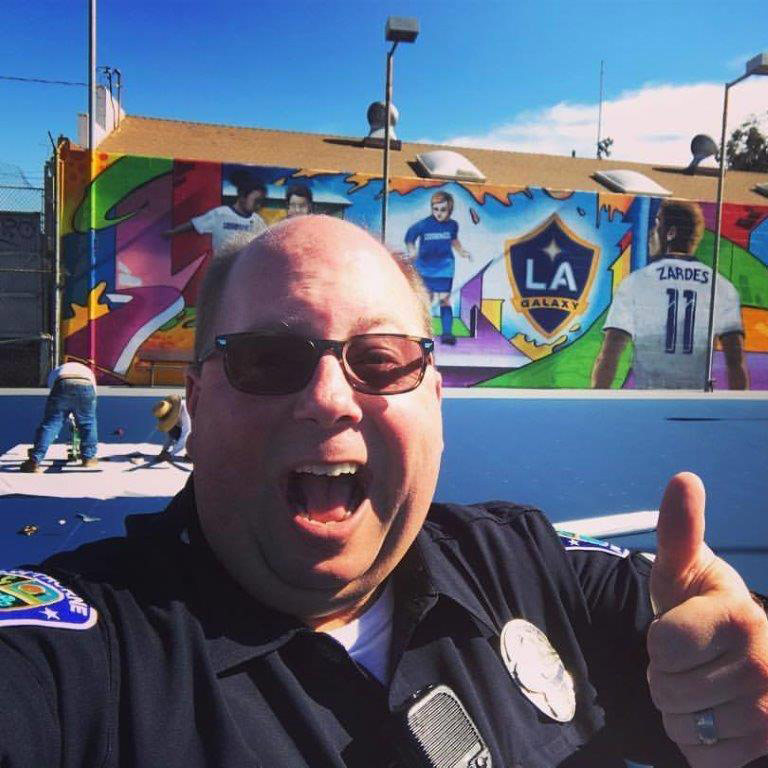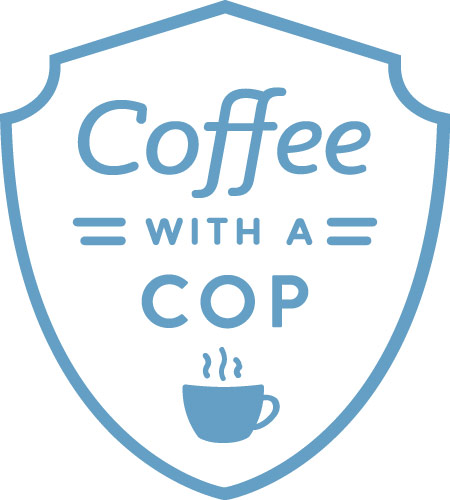Contact Us
To provide feedback on the Community Policing Dispatch, e-mail the editorial board at CPDispatch@usdoj.gov.
To obtain details on COPS Office programs, publications, and resources, contact the COPS Office Response Center at 800-421-6770 or AskCopsRC@usdoj.gov

U.S. Department of Justice
Office of Community Oriented Policing Services
Washington, DC 20530
Sgt Chris Cognac is with the Hawthorne California Police Department and oversees the Coffee with a Cop program.
 Community Policing is about engaging and listening to your community and developing an appropriate crime reduction strategy accordingly. There are many “tools” agencies can use to engage communities but none as unique and powerful as social media. Social Media is often overlooked when it comes to community policing and crime reduction but it should not be, in fact it should be an integral part of your agencies overall communications strategy.
Community Policing is about engaging and listening to your community and developing an appropriate crime reduction strategy accordingly. There are many “tools” agencies can use to engage communities but none as unique and powerful as social media. Social Media is often overlooked when it comes to community policing and crime reduction but it should not be, in fact it should be an integral part of your agencies overall communications strategy.
A good social media program can have a significant impact on crime as well. Sgt Jason Cullum of the Evansville Indiana Police Department states “the use of social media has helped us identify suspects within minutes of an image being posted. The thought of being featured on a social media post is very unappealing to criminals and especially our youth who truly understand the viral nature of social media.”
The Hawthorne California Police Department has been very active on social media for the last 8 years. HPD started out like many agencies did, by using Twitter. Twitter allowed our department to disseminate information to the public like never before. We did not have to rely on traditional media anymore to get our “message” out to the public. Twitter is great at putting information out (even with its 140 character limit), but not so great at us being able to “listen” to our community.
We started with Facebook in 2011, there were only a handful of police agencies using it at the time and initially we used it much like Twitter to put information out to the public. The beauty of Facebook is the ease of use and the way that photos can be easily shared on your page. The fact that Facebook postings could easily be responded to by the public provided a fantastic platform for public “two way” communication. Facebook was not however without its issues and presented a whole new set of problems when dealing with anti-police “haters” and the 1st amendment. We learned to accept the good with the bad and began to realize that 90 percent of the public supported our efforts on Facebook and they began to defend us as well. Facebook has enabled us to showcase our community, officers and city in a positive light that WE controlled, we no longer had to hope the media “gets it right.”
 Social Media continues to evolve and we have learned that we must continue to evolve and control our image and brand and message with each new platform such as Instagram and Snapchat. We learn the subtle nuances of each and target our message to the specific user bases demographics. Some of the things we have learned through trial and error have become best practices for us at HPD as well as some of the agencies around the world that we have helped in starting and crafting a social media presence.
Social Media continues to evolve and we have learned that we must continue to evolve and control our image and brand and message with each new platform such as Instagram and Snapchat. We learn the subtle nuances of each and target our message to the specific user bases demographics. Some of the things we have learned through trial and error have become best practices for us at HPD as well as some of the agencies around the world that we have helped in starting and crafting a social media presence.
Here are some best practices and ideas for your agency to help implement and craft a successful social media program.
- Don’t be afraid to be “different”: Agencies such as Sarasota Florida , Pasco Washington and St Anthony Minnesota all have hugely successful social media programs. They take smart but calculated risks and post content that is not the “typical” police type information, i.e. “this suspect is wanted” “traffic alert at Main Street” postings. Successful social media programs humanize officers, show the community in a good light as well as have a sense of humor because sometimes a photo of cops eating a donut is just funny, so go ahead and post it.
- Not everyone will “like” you, understand and accept criticism online. Sometimes people just want a voice and to be heard. By showing transparency your agency will be practicing procedural justice and helping to build trust in your community.
- Have a good disclaimer on your page telling users that they need to adhere to civil guidelines set forth in the disclaimer. You can see a good example at https://hawthornepolice.com/disclaimer
- Start small; don’t expect social media success overnight, your social media presence will always be a work in progress. Consider starting on a single platform such as Facebook or Instagram.
- Make sure your social media team understands the vision of what your agency wants to project for each social media platform and understand the differences between Snapchat, Nextdoor and Facebook etc. and understand that they are not the same, so the message should be tailored accordingly.
- Be responsive but don’t create an expectation that citizens can post a message on social media and expect an immediate response. A general rule is never respond more than twice to a posting and don’t get into “arguments” give the appropriate information and move on.
- Photos work wonders, take the extra time to craft good photos and video. Don’t post out of focus photos or lots of “posed” shots. Selfies are great, people smile and laugh when they take selfies so don’t be afraid of them. Don’t post too many photos, save some good ones for a rainy day.
- Empower and trust your social media team, let them do what they do best and do not micro manage the social media accounts.
- “Stalk” other police social media accounts around the world, there are some very good ones and you will get some great ideas just from following them.
So if your agency does not have a social media program, they need to seriously consider starting one because they are missing out on a great tool for community policing and the ability to disseminate information and reduce crime. The COPS Office is here to help your agency and can put you in touch w experts to guide you through the process. Good luck and “see you” soon on social media.
Sgt Chris Cognac
Hawthorne Police Department (CA)
Subscribe to Email Updates
To sign up for monthly updates or to access your subscriber preferences, please enter your email address in the Subscribe box.






